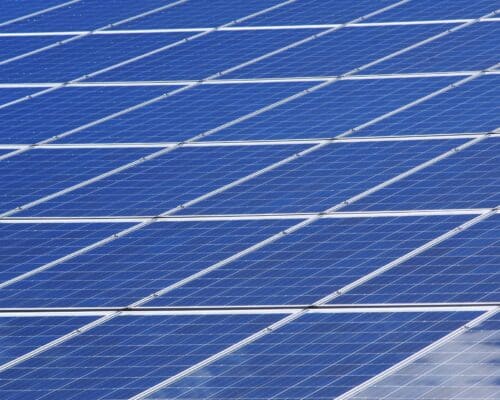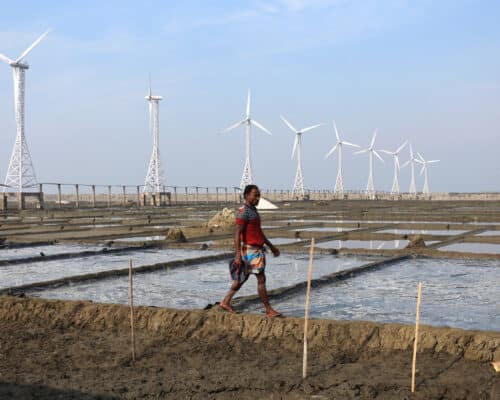Embrace Solar Power and Beat Heatwaves
Photo: Shutterstock / bombermoon
21 May 2024 – by Viktor Tachev Comments (0)
Closed schools, suspended public services and hospitals working at full capacity to help those struggling with extreme heat – this has been a reality in many nations battling the summer temperatures recently. Aside from a threat to the health of vulnerable communities and the well-being of ecosystems, the prolonged and severe heatwaves have put countries’ energy systems under sufficient stress, forcing many fossil fuel plants offline. However, these challenging circumstances have also established solar power as an efficient tool for maximising power generation efforts and ensuring grid stability.
Towards a Future of Extreme Heat and Temperature Records
The past year became the hottest 12-month period in the past 125,000 years. Extreme temperatures affected over 99% of humanity.
According to Copernicus, the past year marked the first time that every day within a year has exceeded 1°C above the 1850-1900 pre-industrial level. Furthermore, close to 50% of the days were over 1.5°C warmer.
Carbon Brief notes that 2024 is likely to overtake the past year and become the hottest in history, with a small margin of increase.
Some scientists even warn that 2024 might be humanity’s first year beyond 1.5°C. While such a move will likely be temporary, the more that individual days break 1.5°C, the closer the world will get to breaching the target in the longer term. Copernicus warns that reaching 1.5˚C of global warming isn’t a distant reality. Climate models predict that if the warming trend over the past 40 years continues, average surface temperatures will likely breach 1.5°C in the early 2030s and 2°C by around 2060.
Solar Power During Heatwaves: Saviour or Unreliable Solution?
Heat generally has a negative effect on solar panels. However, its extent depends on the severity, frequency and duration of the heatwave.
While solar panels are usually built to operate between -40°C and 85°C, extreme heat can negatively impact their performance. These systems are the most effective in the temperature range between 15°C and 35°C. Although the efficiency can vary based on the technology, performance outside those ranges starts to decrease with around 0.5 percentage points for every degree of Celsius increase. Other estimates reveal that solar power performance typically decreases by 0.34 percentage points for every degree above 25°C. Even in extreme situations, near boiling point, the performance decrease doesn’t usually exceed 25%. Furthermore, extreme heat can also strain components of the electricity system, such as transmission cables and transformers that feed into the energy network.
However, the case is the same with fossil fuel infrastructure. Energy system researchers even argue that coal and gas plants are much more vulnerable to failure during extreme heat than renewables and batteries. Real-life examples confirm that. In 2023, Texas, which would be the world’s sixth-leading oil producer if it was a country, was hit by an extreme heat event and became hotter than 99% of the Earth. While the heat forced coal and gas plants offline, thanks to solar power, the state managed to bear the record consumption and preserve the energy grid’s stability.
On the other hand, moderate heatwaves have generally seen countries produce record amounts of solar energy. Naturally, the longer the heatwave lasts, the more power will be produced and potentially stored. Furthermore, summertime, during which heatwaves are usually the most severe and common, has longer days and clearer skies. In these circumstances, even though high temperatures reduce panels’ efficiency, solar power can generate substantially more electricity.
Furthermore, solar panel technology is continuously innovating. Producers are developing new systems with superior temperature coefficients and efficiency. As a result, nowadays, solar panels are tailored to the climate specifics of high-temperature regions. Furthermore, researchers are even exploring how solar panels might work at night. Stanford scientists recently modified commercially available solar panels to generate a small amount of electricity during nighttime – 50 milliwatts per square meter. Alternatively, this is around 0.04% of the daytime power output of a regular panel. While this is sufficient only for low energy-consuming appliances, including nighttime lighting and charging devices, it can prove helpful for rural and off-grid areas.
Solar Power as a Tool For Climate Change Mitigation and Energy System Stability
The global energy system struggles to cope with extreme and prolonged heat since most power sources require cooling to function properly. However, solar power is proving to be a powerful and efficient tool for tackling the different impacts of heatwaves.
First, substituting carbon-intensive technologies and reducing emissions helps slow down the process of climate disasters becoming more frequent and severe. Ember notes that tripling clean sources of generation and doubling energy efficiency savings would cover 85% of the fossil fuel reductions needed by 2030 to meet global climate goals. The IEA states that tripling renewables, mainly solar and wind, would be the most significant action the world could take by 2030 to keep 1.5°C within reach. IRENA’s World Energy Transitions Outlook describes these goals as a “course correction” to align with a 1.5°C pathway.
Aside from being a tool for climate change mitigation, solar power is helping nations bear with heatwave-induced energy shortages and retain power system stability. According to some experts, solar panels are ideally suited to accommodate and produce power from the intense sun radiation, which is driving increased energy demand for cooling in the first place. Without it, the impact of heatwaves on energy systems would have been way more substantial. Furthermore, building up solar power capacity would ensure that countries won’t have to switch back to coal in cases of increased stress on their energy systems, as recent heatwaves worldwide have shown.
Whether it is about panels in a desert in the Middle East or on residential rooftops in Japan, solar power is proving to be a reliable solution that will help ease the strain on the energy system in a climate-friendly and affordable way.
by Viktor Tachev
Viktor has years of experience in financial markets and energy finance, working as a marketing consultant and content creator for leading institutions, NGOs, and tech startups. He is a regular contributor to knowledge hubs and magazines, tackling the latest trends in sustainability and green energy.
Read more







